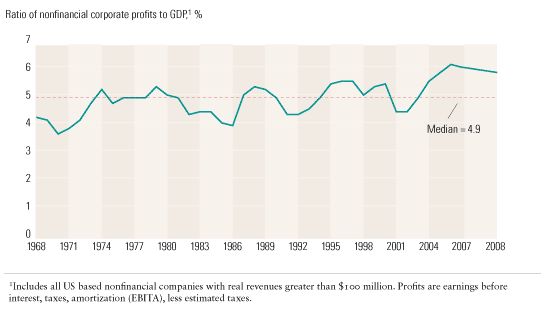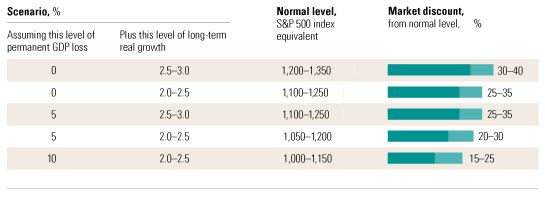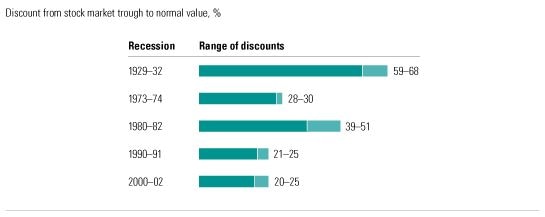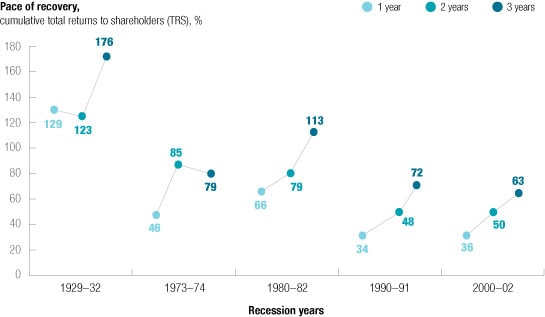It may be a nice problem to have, but even companies with healthy finances face a quandary: should they pursue acquisitions and invest in new projects now or wait for clear signs of a lasting recovery? On the one hand, the growing range of attractive—even once-in-a-lifetime—acquisitions and other investment opportunities not only seems hard to pass up but also includes some that weren’t possible just a few years ago. Back then, buyers faced competition from private-equity firms flush with cash, governments applied antitrust regulations more strictly, and owners were less willing to sell. What’s more, investments in capital projects, R&D, talent, or marketing are now tantalizingly cheaper than they have been, on average, over the economic cycle. On the other hand, many indicators suggest that the economy has yet to hit bottom. Companies that move too soon risk catching the proverbial falling knife, in the form of share prices that continue to plummet, or spending the cash they’ll need to weather a long downturn.
Timing such moves is bound to be difficult. How quickly the world economy returns to normal—and indeed, what “normal” is going to be—will depend on hard-to-predict factors such as the fluctuations of consumer and business confidence, the actions of governments, and the volatility of global capital markets. Identifying market troughs will be particularly hard because stock indexes can rally and decline several times before the general direction becomes clear. In previous recessions, as many as six rallies were followed by market declines before the eventual troughs were reached.1 During the current downturn, market indexes fluctuated by an average of 20 percent each month from November 2008 to March 2009.
Given the uncertainty, executives may easily give up in frustration, hunker down, and await irrefutable evidence that the economy is turning around. But this approach could be a recklessly cautious one. Instead, executives must make educated decisions now by weighing the risks of waiting or of moving too early. And while better timing of acquisitions, and therefore the prices paid for them, can make a big difference in their ability to create value, the best way to minimize risk is to ensure that investments have a strong strategic rationale.
Executives considering whether to jump back into M&A or to make other strategic investments now must understand what lies behind earnings and valuations. To illustrate the risks, we conducted an analysis of a hypothetical acquisition. Real US market and economic data allowed us to build a range of scenarios embodying different assumptions about future US economic performance.2 We found that even scenarios assuming conservative levels of market performance (as indicated by the experience of past recessions) suggest that many industries may be reaching the point when acting sooner would be as appropriate as—if not better than—acting later. Managers who wait may be failing to maximize the creation of value.
Analyzing scenarios
The primary drivers of capital markets are levels of long-term profits and growth, so we define our scenarios in those terms. Long-term profits are tightly linked to the economy’s overall performance: over the past 40 years, they have fluctuated around a stable 5 percent of GDP3 (Exhibit 1). It’s therefore reasonable to assume that a return to normal for corporate profits would mean a return to their long-term level relative to GDP and that long-term growth in corporate earnings will also be in line with long-term GDP. For our scenarios, we assume that US corporate profits will revert to some 5 percent of US GDP, although that estimate could be a conservative one if the trend to higher profits in the years leading up to the crisis resulted from a structural change in the economy. One can tailor this analysis to the circumstances of individual industries by developing a more detailed understanding of the linkages among GDP, revenue, and earnings.
Profits revert to the mean

Growth in the labor force and productivity drive the long-term growth of real GDP. Since it has historically grown in the range of 2.5 to 3.0 percent a year and returned to its former trend line in all US downturns from the Great Depression onward, with no permanent loss in GDP once the economy recovered, our base scenario assumes that both of those trends will continue. (We also examined scenarios reflecting the possibility that long-term GDP growth might be lower as a result of changing demographics, declining productivity growth, and the effects of the current financial crisis or that GDP might fall permanently by as much as 5 or 10 percent.) Finally, in normal conditions the market as a whole has a price-to-earnings ratio ranging from 15 to 17. We used that multiple in our 2.5–3.0 percent growth scenario and a lower one (14 to 16) in our 2.0–2.5 percent growth scenario. Both multiples are consistent with a discounted cash flow valuation of companies.4
Under the scenario that most resembles the course of previous recessions (no permanent loss of GDP and 2.5 to 3.0 percent long-term real growth), the stock market’s normal value in early 2009 (as measured by the S&P 500) would have been about 1,200 to 1,350. This implies that the stock market was trading, as of the end of March, at a discount of about 30 to 40 percent from its normal value (Exhibit 2). The discount is much lower under the more negative scenarios, but even in the worst of them—an unprecedented 10 percent decline and a limited recovery—the market is still valued at a small discount. You would have to expect a permanent GDP reduction of around 20 percent to see the March S&P 500 index level (around 800) as normal. A similar analysis for the performance of the stock market in previous recessions finds that at the trough of deeper recessions, it typically trades at a discount greater than 30 percent from its normal value (Exhibit 3).
Estimating stock market value

Discounts in earlier recessions

Current stock prices can be interpreted in several ways. Perhaps the market is experiencing levels of pessimism typical of previous downturns, with the same opportunities for investors and acquirers. Or it may assign a reasonably high probability to a large, permanent GDP decline, which can’t be ruled out even though it didn’t happen in past downturns since, and including, the Great Depression. Finally, given the different nature of this downturn, the old relationships among GDP, profits, and stock prices may no longer hold, or in the future investors will demand higher returns from the market.
Timing the recovery
Strong companies deciding whether to move forward now with acquisitions or major capital projects should weigh further data on the timing of a stock market recovery. One common analysis calculates how many years must pass before the market will return to normal, assuming growth at the historical long-term average rate (10 percent a year). In past recessions, however, the stock market returned from the trough much more quickly, with cumulative returns, over the two years that followed it, of 50 percent to 130 percent (Exhibit 4).5 If this pattern holds in the current downturn, there’s a real danger that companies waiting too long will miss the upside of the rebound.
Speedy recovery

Such an analysis of earnings and stock markets can help companies evaluate the pros and cons of waiting or acting now. Assume, for ease of analysis, just two scenarios: either the market is currently at its trough, or it will decline by an additional 20 percent, reaching its trough in six months, so that the S&P 500 falls from its current level to around 640. A company attempting to time the market for a planned acquisition could make its move at any point, but let’s assume three: it invests now, in six months, or in a year. For the purposes of our analysis, we assume that the market and the economy will return to normal in three years under either scenario, though clearly these are not the only possibilities.
Now, or later?

In this simplified example, only timing an investment perfectly, in six months under scenario two, would produce a net present value (NPV) meaningfully better than the one resulting from investing now (Exhibit 5). If a company didn’t hit the timing precisely, it could easily end up with a much lower NPV. This type of approach can also establish what you’d have to believe for “wait and see” to be the right strategy, but the analysis must be tailored to a specific industry or country and to the type of investment, such as M&A, capital expenditures, R&D, or marketing. The approach can also be tailored to analyze other risks, such as the possibility that competitors could preempt strategic moves, that regulators could become less accommodating, that companies could run out of capital, or that other, more favorable, investment opportunities might become available should the downturn deepen.
Much uncertainty surrounds the timing of the downturn’s end, but companies waiting for clear evidence of a turnaround may find that they have been recklessly cautious and missed once-in-a-generation opportunities to acquire or invest. Executives considering when to make their next strategic moves can learn much by examining the course of previous downturns—particularly how valuation levels were related to corporate earnings and how valuations and earnings were related to the economy as a whole.

